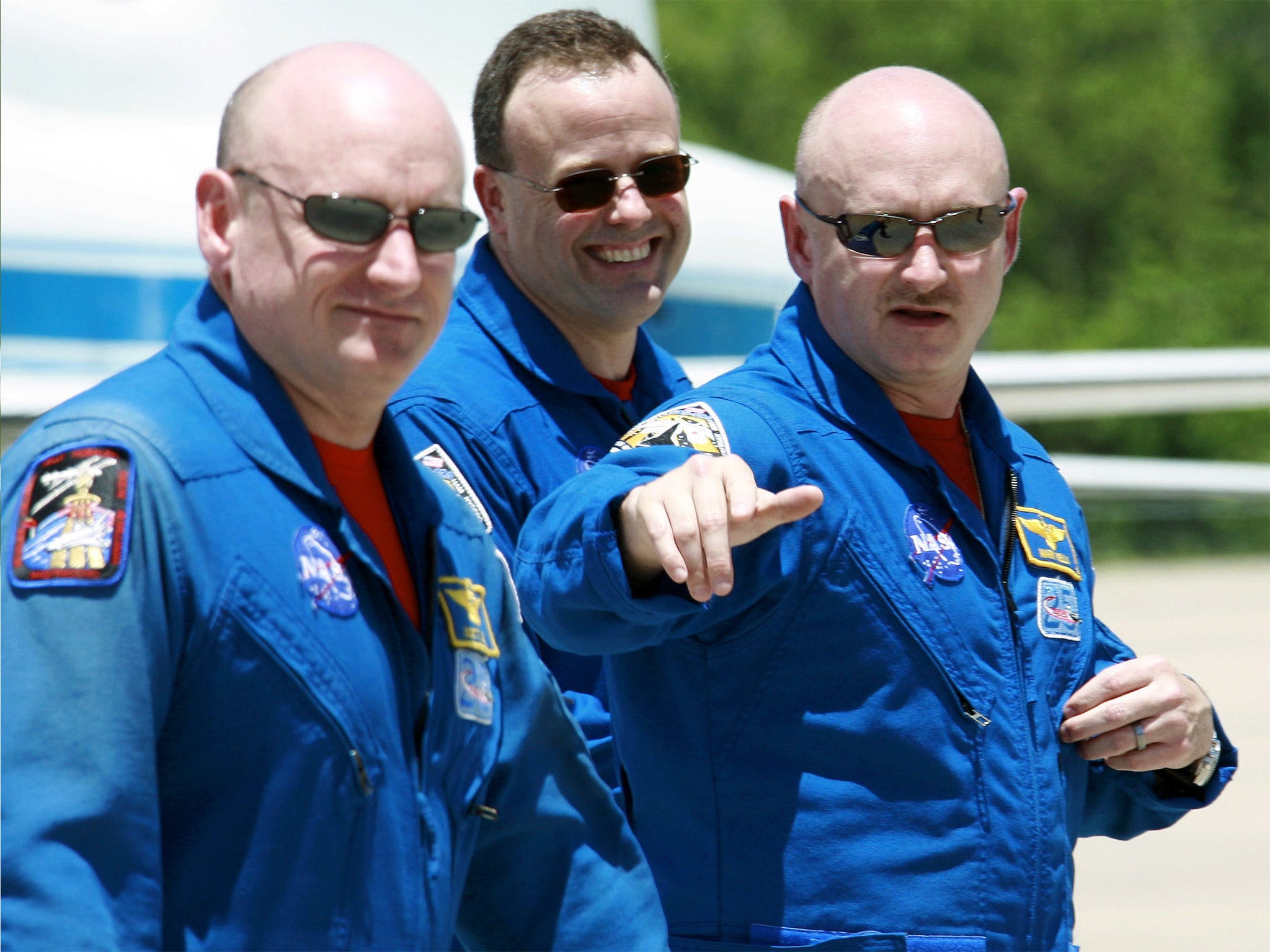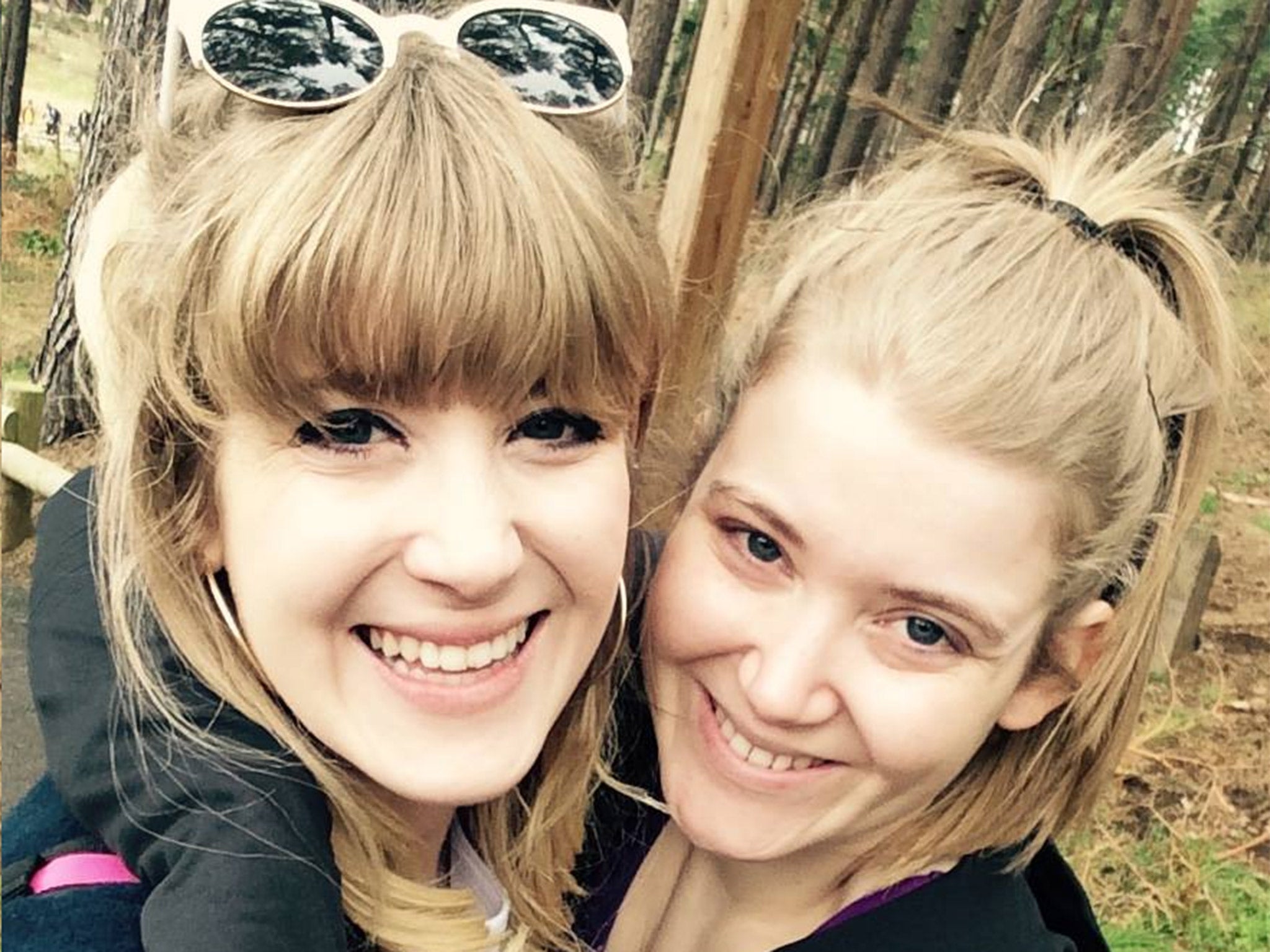Nasa scientists study US astronaut Scott Kelly's twin to determine the effects of space on the human body
Chloe Hamilton, a twin herself, explores the efficacy of such research

Your support helps us to tell the story
From reproductive rights to climate change to Big Tech, The Independent is on the ground when the story is developing. Whether it's investigating the financials of Elon Musk's pro-Trump PAC or producing our latest documentary, 'The A Word', which shines a light on the American women fighting for reproductive rights, we know how important it is to parse out the facts from the messaging.
At such a critical moment in US history, we need reporters on the ground. Your donation allows us to keep sending journalists to speak to both sides of the story.
The Independent is trusted by Americans across the entire political spectrum. And unlike many other quality news outlets, we choose not to lock Americans out of our reporting and analysis with paywalls. We believe quality journalism should be available to everyone, paid for by those who can afford it.
Your support makes all the difference.Identical twins are one of the most mysterious miracles in nature. From the moment their one zygote splits into two, they embark on parallel lives; the same and yet completely different.
US astronaut, and identical twin, Scott Kelly touched down on Earth yesterday morning after almost a year in space. Scott – and his fellow cosmonaut, Russian-born Mikhail Kornienko – spent 340 days aboard the International Space Station. The extended tour, which was twice the length of a normal stay, was part of a project to study the effects of space on the human body. To that end, for the past year, scientists have been performing tests on spaceman Scott and his Earthbound identical twin Mark, to compare the differences.
Twins have long been a source of scientific enquiry. Not only do they make interesting subjects in themselves, but they also allow researchers to test varying environments on one twin, while keeping the other as an identical constant. But twins are not carbon copies.
An identical twin myself, I'm aware of the subtle differences between monozygotic siblings; distinctions which perhaps might be too delicate for the naked, non-twin eye. Lydia and I look similar, but we're not the same. Our eyes might be the same shade of blue, but mine are wider in shape. Her feet are slightly bigger; my face is longer. And then – of course – there's the fact that I've cut a blunt fringe into my bleached blonde hair and pierced my ear cartilage six times; she favours a more natural look. Our differences extend beyond physical appearance, too. She's extremely organised; I'm less so. She's more patient, while I have a quick temper. When our dad died (probably our biggest life event so far), she didn't want to talk about it, whereas I confided in anyone and everyone. In short, we are two completely different people.
Perhaps unsurprisingly, Lydia and I have always been fascinated by twin studies. I'm not sure either of us would want to go into space, but we've talked about the next best thing: signing up to TwinsUK, the biggest adult twin registry in the UK. The register comprises 12,000 twins who are used to study the genetic and environmental causes of different traits and diseases.
According to Tim Spector, Professor of Genetic Epidemiology at Kings College London and director of the Twins UK Registry, twins are a "unique natural experiment", which allow scientists to study nature versus nurture.
"There's no other way of getting this information," he says. "Identical twins can have the same DNA and the same genes but in one twin a gene might be switched off."
This small variance, Professor Spector says, could manifest itself either physically or mentally in a person, and he explains why even identical twins differ. As a result of their twin research, scientists have discovered a range of genetic conditions previously thought to be environmental, including varicose veins and acne. At the same time, diseases which were originally thought to be caused entirely by genetics have surprised scientists. One such disease is cancer. "Back pain is three times more genetic than breast cancer," says Professor Spector.

The space study, however, might not be as revealing as previously hoped. Professor Spector says he has mixed views on it. "Any serious twin researcher knows that it's a silly design. The actual experiment itself isn't very useful because one twin stayed on Earth. They should have put both twins in space."
Professor Spector says that the Nasa researchers would get more accurate results if they compared statistics taken from astronaut Scott Kelly last year, when he was still on Earth, with statistics taken from him post-space expedition. "And then you look at the before and after," he says.
Because, as any twin will tell you, we're not exact replicas. Our very similar bodies and minds still react differently to different things, and that includes spending 340 days in space.
Twin to twin, though, I have to applaud the Kelly brothers. Lydia and I rarely spend longer than a week apart. She's away at the moment, actually, and we're both so out of sorts that we've come down with identical, stress-related colds. I don't know how they managed a year.
Join our commenting forum
Join thought-provoking conversations, follow other Independent readers and see their replies
Comments